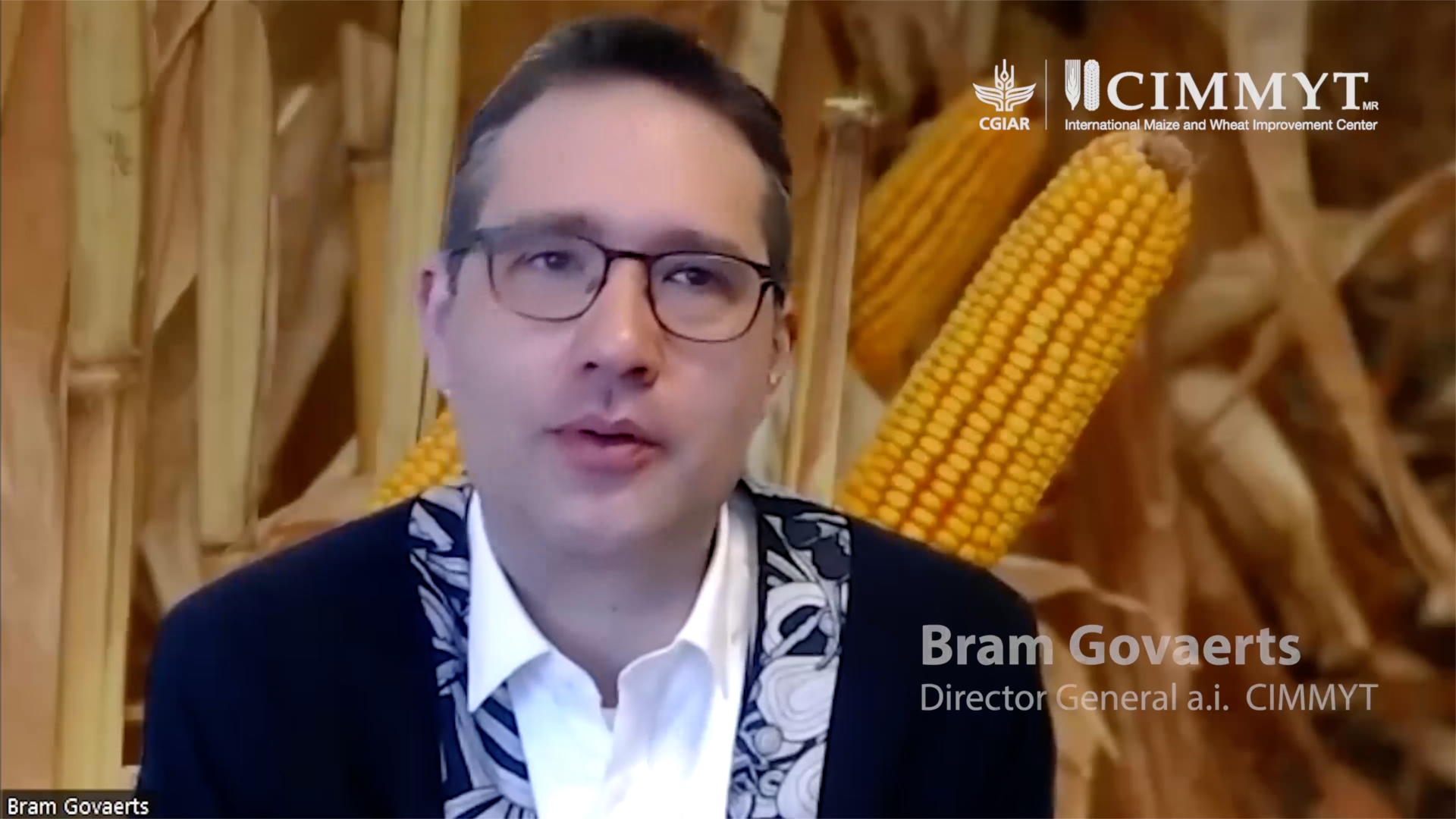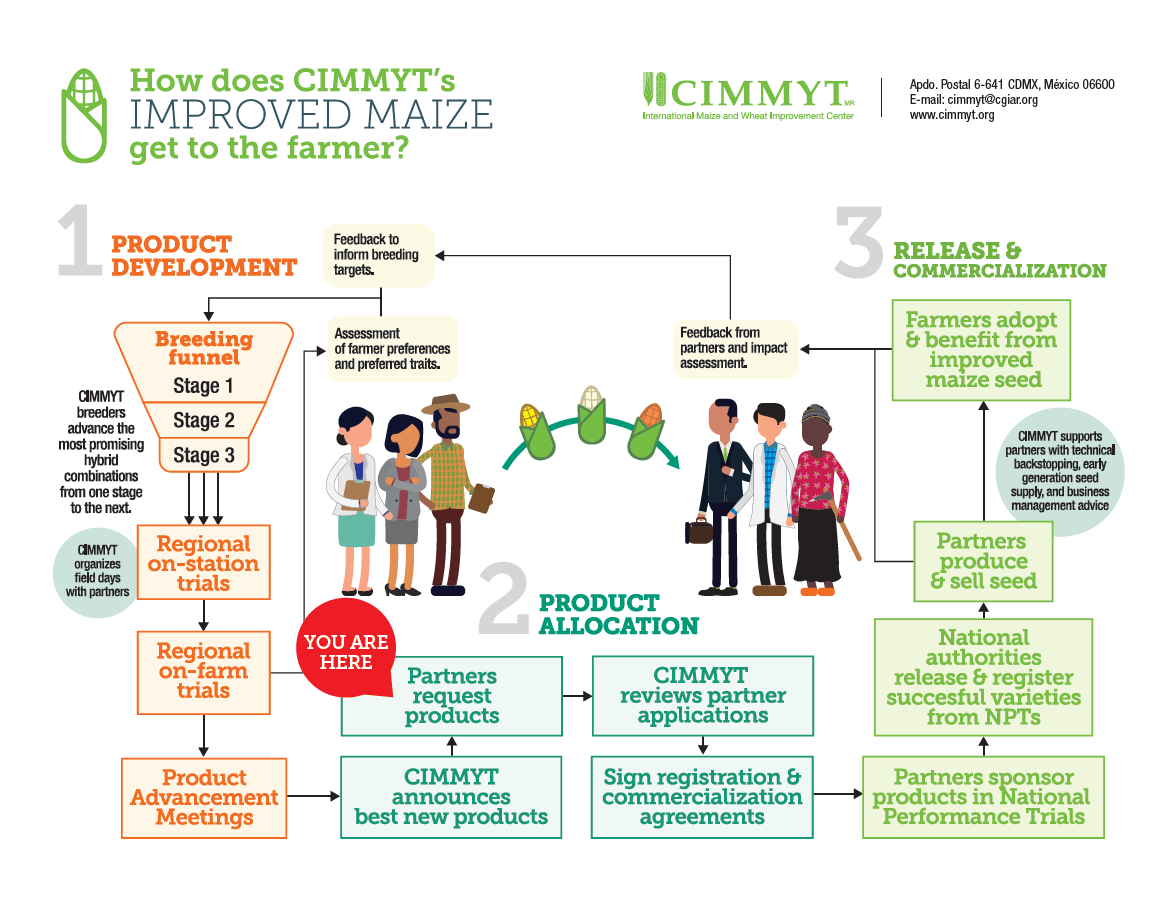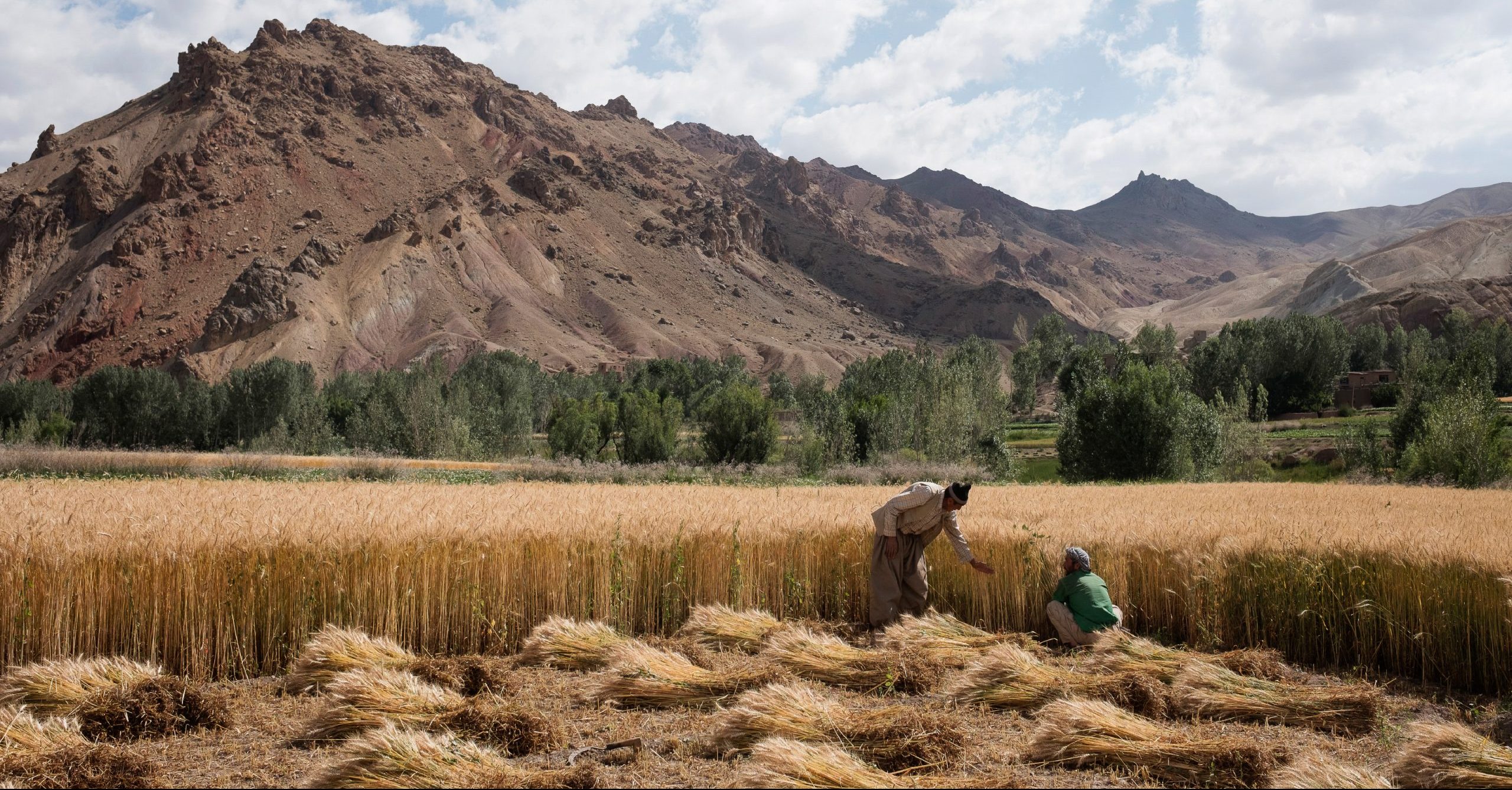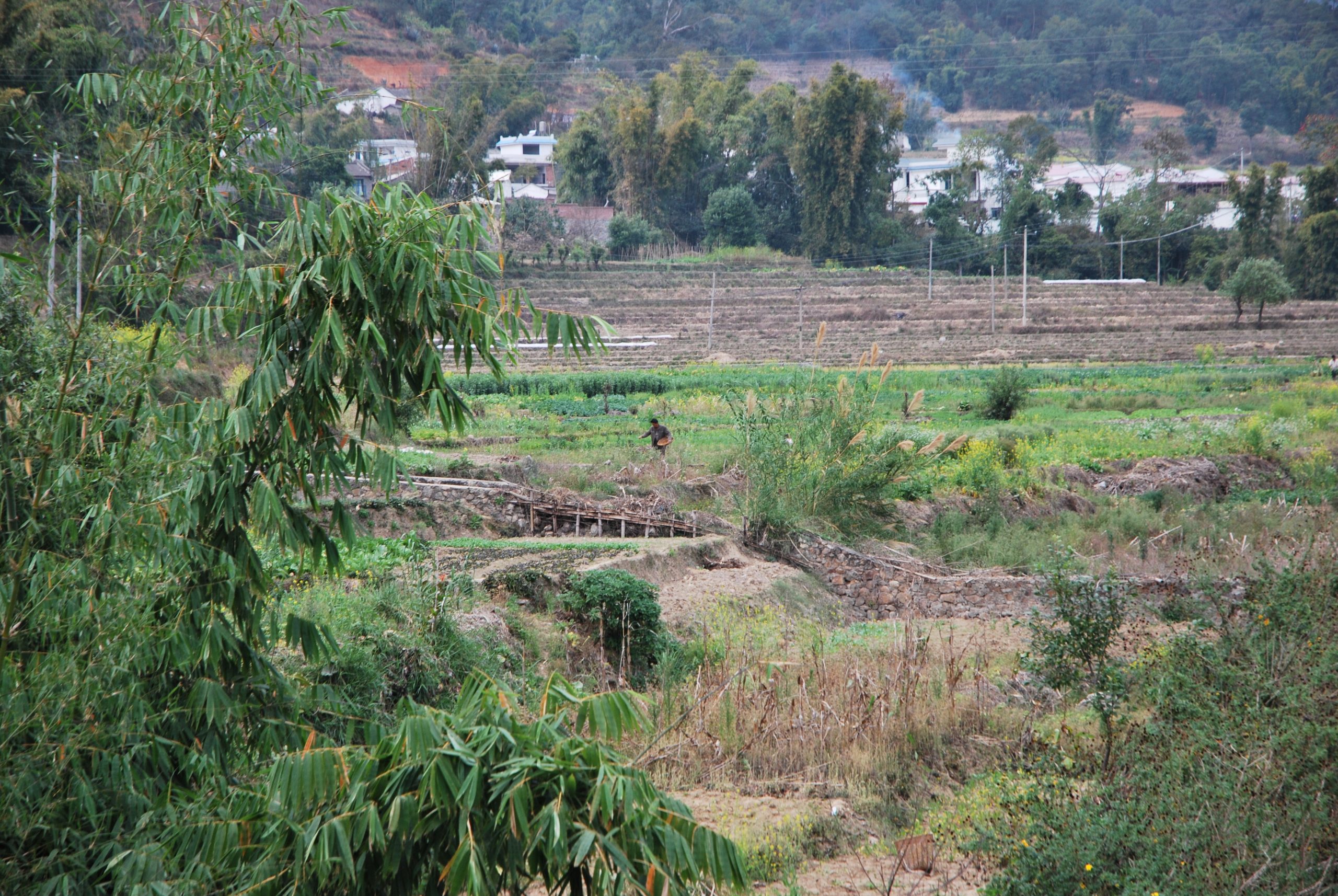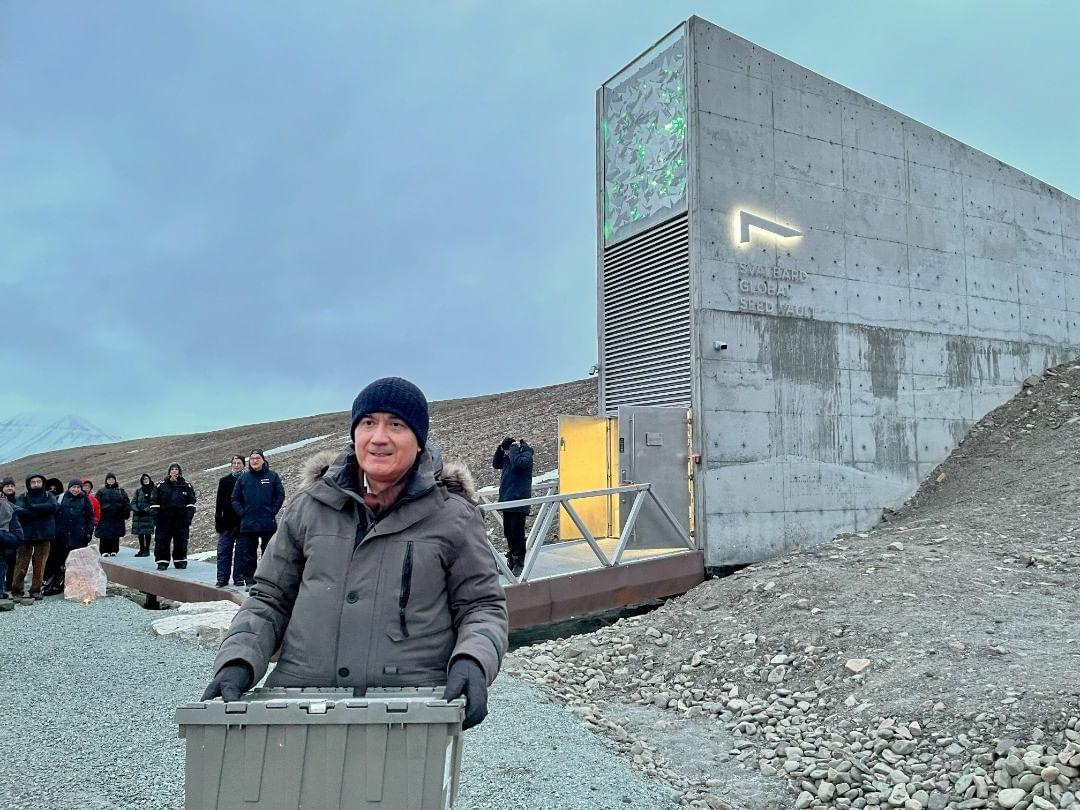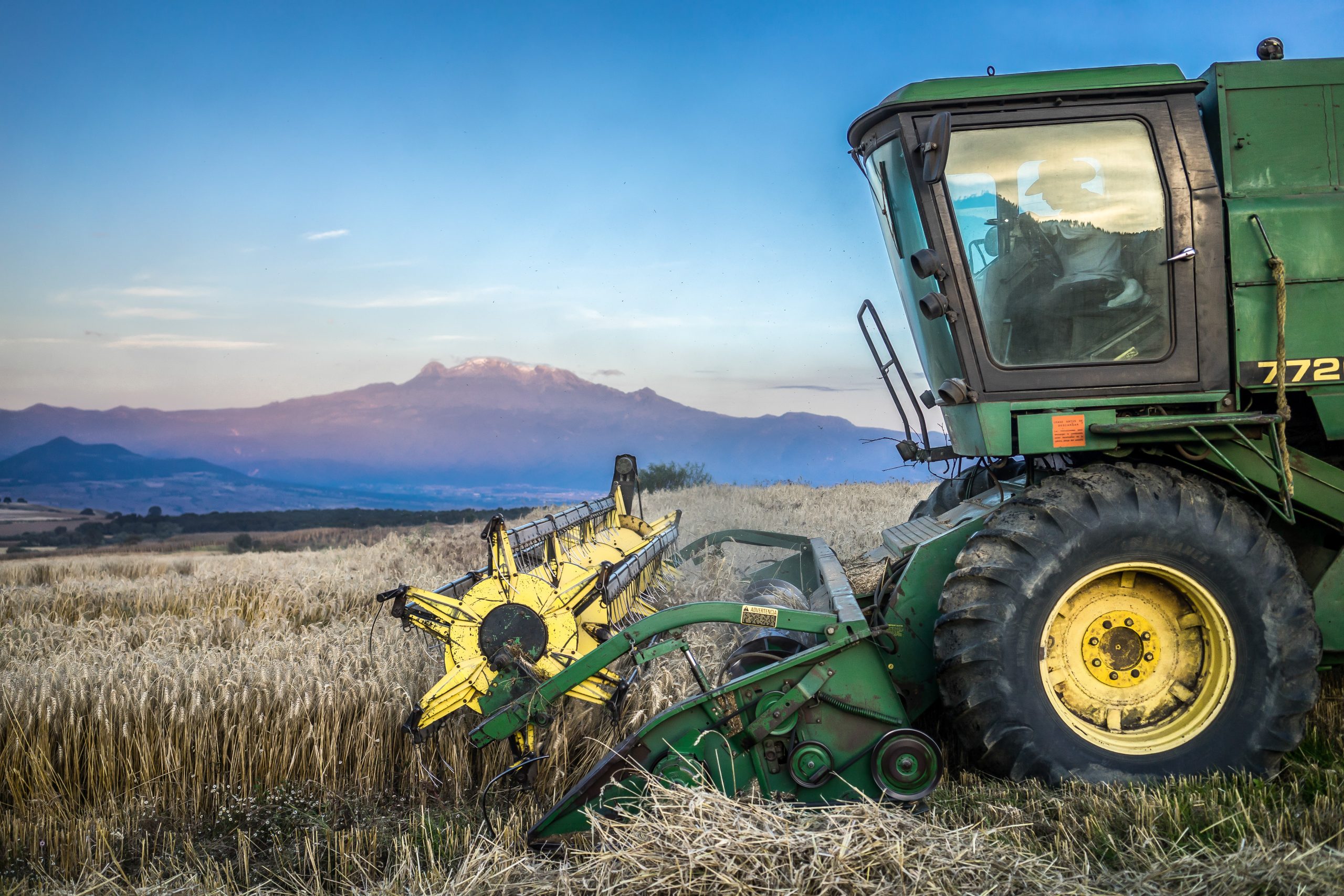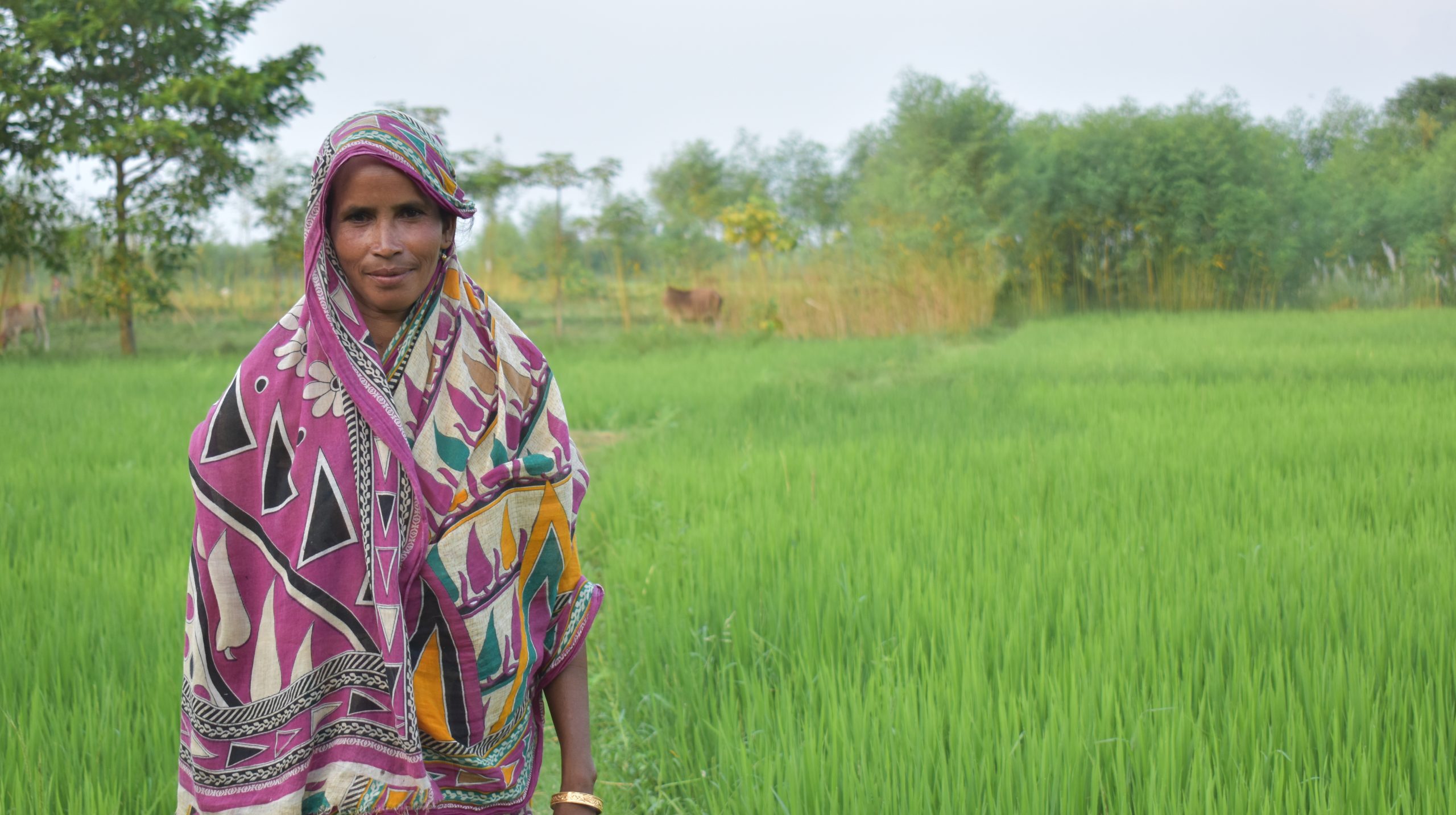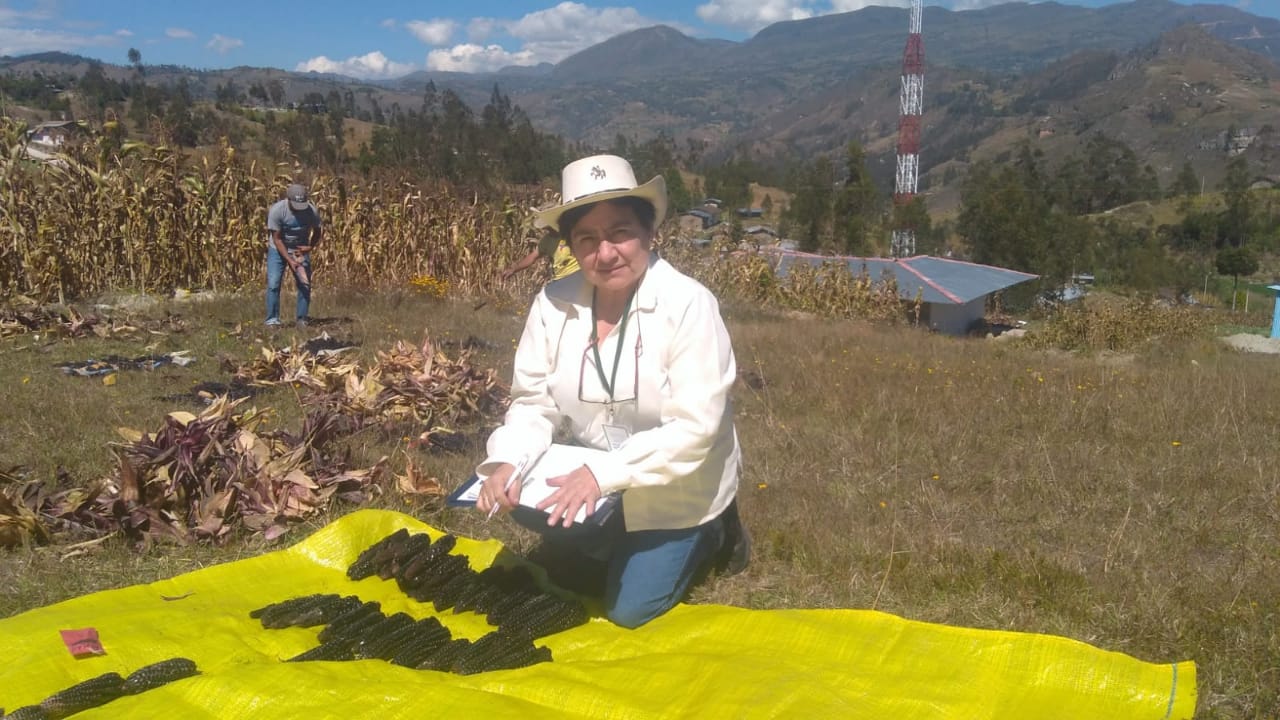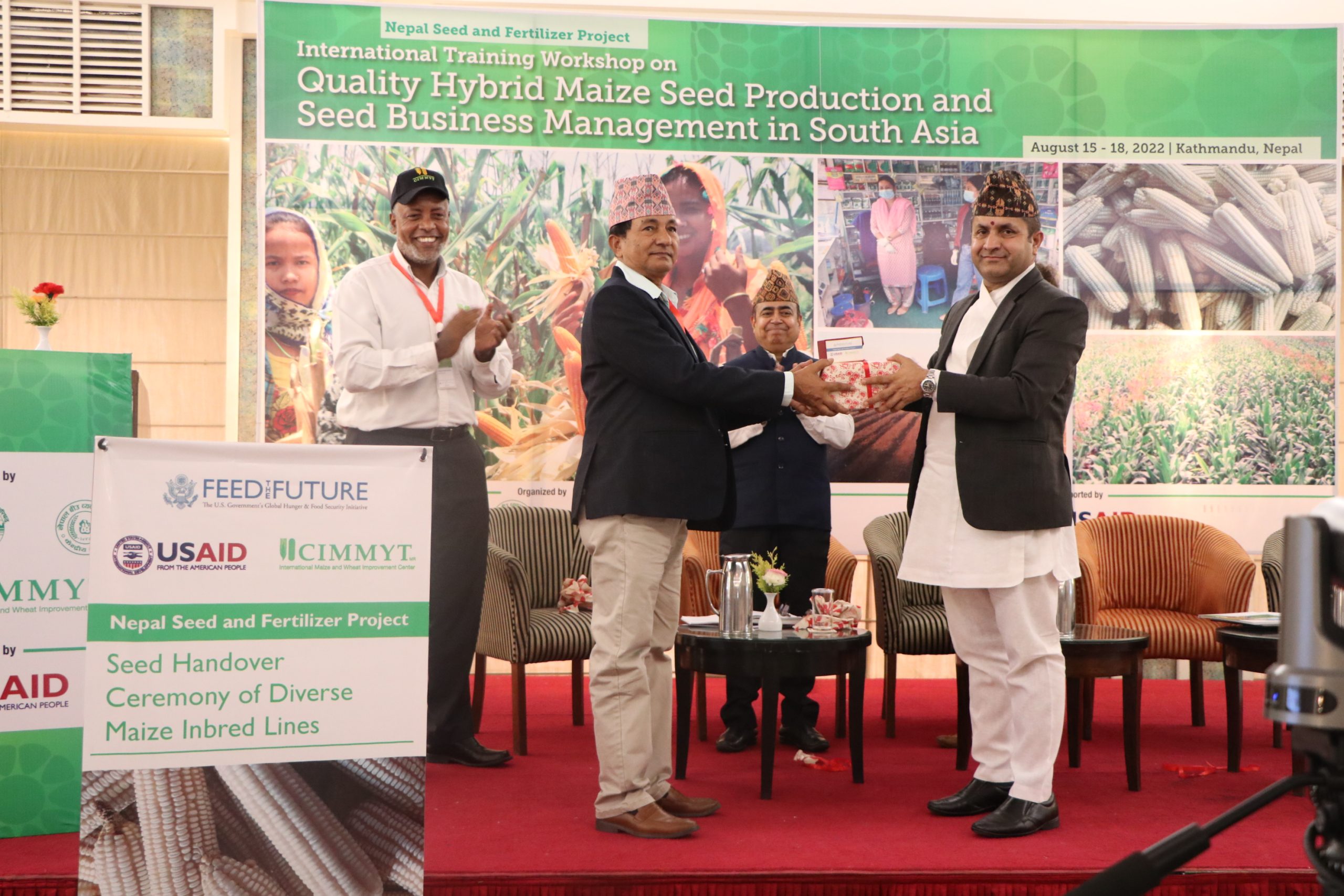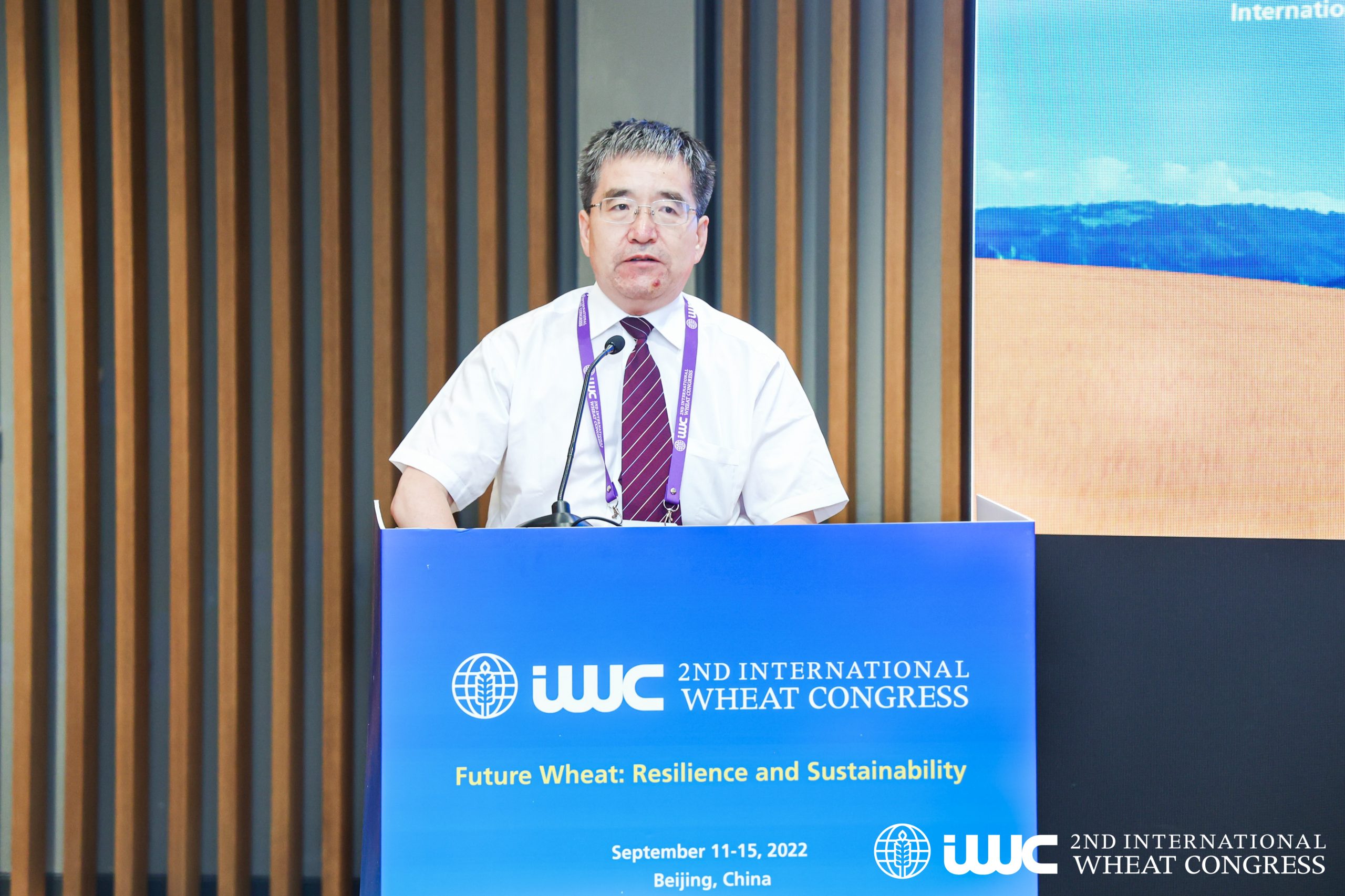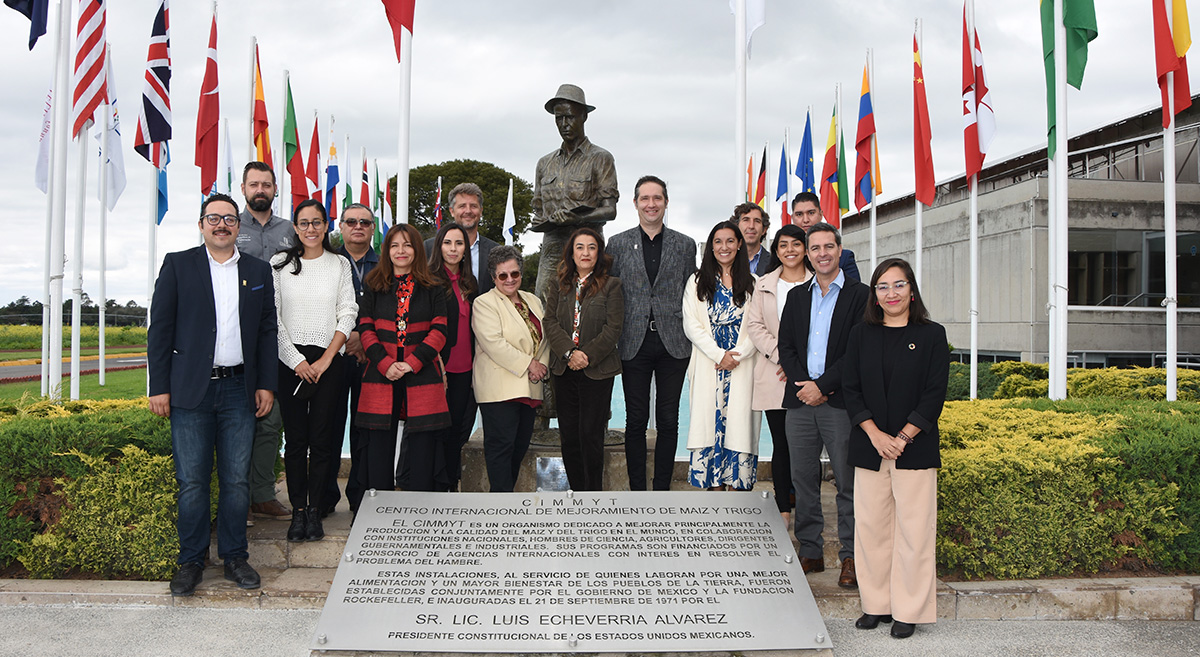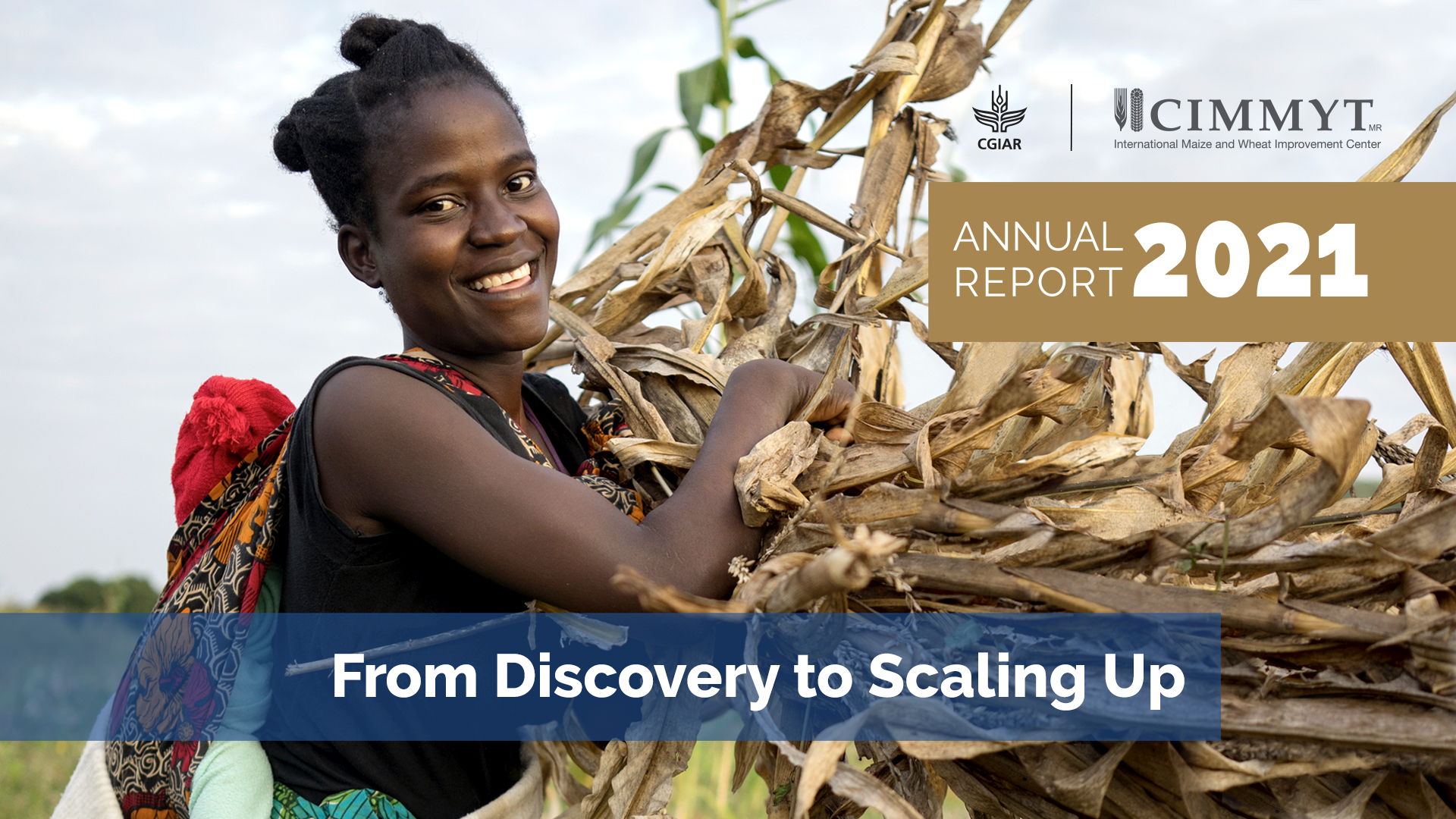Nutrition, health and food security
As staple foods, maize and wheat provide vital nutrients and health benefits, making up close to two-thirds of the world’s food energy intake, and contributing 55 to 70 percent of the total calories in the diets of people living in developing countries, according to the U.N. Food and Agriculture Organization. CIMMYT scientists tackle food insecurity through improved nutrient-rich, high-yielding varieties and sustainable agronomic practices, ensuring that those who most depend on agriculture have enough to make a living and feed their families. The U.N. projects that the global population will increase to more than 9 billion people by 2050, which means that the successes and failures of wheat and maize farmers will continue to have a crucial impact on food security. Findings by the Intergovernmental Panel on Climate Change, which show heat waves could occur more often and mean global surface temperatures could rise by up to 5 degrees Celsius throughout the century, indicate that increasing yield alone will be insufficient to meet future demand for food.
Achieving widespread food and nutritional security for the world’s poorest people is more complex than simply boosting production. Biofortification of maize and wheat helps increase the vitamins and minerals in these key crops. CIMMYT helps families grow and eat provitamin A enriched maize, zinc-enhanced maize and wheat varieties, and quality protein maize. CIMMYT also works on improving food health and safety, by reducing mycotoxin levels in the global food chain. Mycotoxins are produced by fungi that colonize in food crops, and cause health problems or even death in humans or animals. Worldwide, CIMMYT helps train food processors to reduce fungal contamination in maize, and promotes affordable technologies and training to detect mycotoxins and reduce exposure.
Achieving sufficiency and sustainability in maize production
 Environmental health and biodiversity
Environmental health and biodiversity
At the International Maize Congress, Bram Govaerts emphasized the importance of collaborative research to work towards healthy diets and sustainable systems.
New CIMMYT maize hybrids available from Latin America Breeding Program
 Innovations
Innovations
CIMMYT is offering a new improved maize hybrid to partners, to scale up production for farmers in the region.
Increasing yield gain in Afghanistan
 Nutrition, health and food security
Nutrition, health and food security
Genetic gain for yield in CIMMYT varieties distributed in Afghanistan shows an increase over a 14-year period.
Leading Norwich plant scientists call for action to mitigate food crisis
 Nutrition, health and food security
Nutrition, health and food security
Source: Eastern Daily Press (15 Oct 2022)
A tiered approach is needed to tackle food crises and wheat shortages triggered by the Ukraine-Russia crisis.
CIMMYT and China: A successful partnership since 1974
 Capacity development
Capacity development
The CIMMYT–China collaboration over four decades has added some 10.7 million additional tons of wheat to China’s national wheat output.
Planting Better Seeds a Key for Mexico’s Food Security
 Nutrition, health and food security
Nutrition, health and food security
Source: Mexico Business News (14 Oct 2022)
Bram Govaerts discussing the development of seed systems that work for smallholder farmers.
CIMMYT delivers seed to Svalbard Global Seed Vault
 Environmental health and biodiversity
Environmental health and biodiversity
Maize and wheat seeds stored in Svalbard are essential for protecting global biodiversity for future generations.
Exploring the potential for scaling nutritious cereal-based foods
 Nutrition, health and food security
Nutrition, health and food security
CIMMYT’s agrifood systems research looks at how to better connect farmers to consumers in a sustainable way, allowing for higher benefits from farming and increased access to nutritious cereal-based food for consumers.
The critical role of smallholder farmers of the Eastern Gangetic Plains in the global food chain
 Gender equality, youth and social inclusion
Gender equality, youth and social inclusion
For World Food Day, discover how CIMMYT is improving food security, livelihoods and nutrition in South Asia, with support from ACIAR.
Making purple maize a seed of prosperity for Peruvian farmers
 Gender equality, youth and social inclusion
Gender equality, youth and social inclusion
High-yielding purple maize, introduced into Peruvian agriculture by Alicia Medina Hoyos, is attracting global attention.
Elite maize seeds handed over to seed sector stakeholders in Nepal
 Nutrition, health and food security
Nutrition, health and food security
A range of maize varieties that are high-yielding, climate resilient and nutritious are being introduced for the first time in Nepal.
Forging collaborative ties from south to south
 Nutrition, health and food security
Nutrition, health and food security
Wheat experts gather at the Second International Wheat Congress to discuss resilience and sustainability, aiming to increase collaboration in the advancement of the crop.
Nestlé Mexico and CIMMYT expand their collaboration for responsible sourcing through Plan Maíz
 Climate adaptation and mitigation
Climate adaptation and mitigation
The results of the Plan Maíz initiative were presented and, looking ahead, one of the goals is to ensure that 20% of the maize and wheat from this project is sourced through regenerative agriculture practices by 2025 and 50% by 2030.
Annual Report 2021 launched
 Capacity development
Capacity development
CIMMYT discovers and validates new science, translates it into innovations, and scales them up for farmers and society.
